Building a better mousetrap was not enough. Continue reading
When we moved from Michigan to Rockville, Sue and I knew almost nothing about marketing. When the business was closed over three decades later, we knew a lot more. Unfortunately, at least half of what we had learned was probably wrong.
In Detroit Sue had depended on IBM for referrals. When we moved we learned that the branch offices had no specific policy on this. Each salesperson knew a few of the independent software companies. Since no one in the Hartford office knew us, it was folly to depend on IBM in Connecticut.
The first year or so was the only time in the first three decades of the company’s existence that I had time on my hands. I wrote a little system on the 5120 to keep track of leads. I got most of my information from the Yellow Pages in the reference room of the Hartford Public Library.
I definitely remember sending a letter to the area’s jewelry stores. I think that we also sent one to construction companies. I do not remember how we did these exactly. Perhaps I just wrote a program on the 5120 to print letters with data from the lead tracking system. It seems unlikely that we had letterhead and company envelopes with our Rockville address yet.
I think that we got the lead for the Harstans account from the jewelry store mailing. I don’t remember any responses from anything in the construction industry. If we received any inquiries, Sue would have dealt with them.
After we had purchased a Datamaster with a letter-quality printer, we converted the lead tracking system to run on the new machine. We also invested in company letterhead and web-mounted company invoices. Both were Nantucket grey with light blue lettering. The TSI was striped in imitation of IBM’s logo, but we used a sans serif font.
We definitely did several mailings to ad agencies. Potter Hazlehurst responded to the first mailing. Other mailings may have at least produced a few lukewarm leads.
We received two free pieces of publicity. The GrandAd installation at Harland-Tine was featured in Basic Society News. This was described here. The other article, an interview with Dick Keiler, was published a few years later in AdWeek New England. It is described here.
We also bought our only ad ever in the same issue of that magazine. It was a waste of money.
By 1983 we began to get quite a few leads from IBM. We closed many of these deals, but most required significant custom programming and offered virtually no opportunity for additional business. What we wanted to sell were ad agency systems that took advantage of work that we had already done.
We participated in a campaign organized by a marketing manager at IBM to allow its salesmen to promote “IBM Advertising Agency Solutions.” He asked the third-party developers of ad agency software to provide a list of how their software could benefit ad agencies. Someone then took all of these items, assembled and sorted them all into one huge list, and put them into an attractive fold-out piece in which each of these advantages was claimed for “IBM solutions.”
Of course, no system marketed by anyone actually did all of those things, and some of the advantages were incompatible with others. Furthermore, none of the names of the companies that marketed and supported the software were included. The pamphlet only mentioned “IBM solutions” until the very last paragraph, which stated, “When you combine the specialized capabilities of IBM Business Partner applications for advertising with the quality control, product support and service that accompanies IBM systems, you have a comprehensive and powerful solution. One that can meet the needs of your agency today—and continue to serve you and your clients tomorrow.”
I was very upset when they sent the finished product. Set aside the atrocious grammar of the last sentence fragment. Who will possibly use this piece? IBM reps could not (or at least should not) use it because it doesn’t indicate which business partner could address which problem. No ethical business partner could hand it out because the prospect might think that the software company was claiming all of these advantages for its own product. I suppose that if we were allowed to white-out the parts that did not apply to our systems, we might be able to use it, but it would not look too professional.
When I explained that this was false advertising because the “IBM solution” described within did not exist, he was taken aback. He honestly thought that we would all be happy just to be associated with IBM. I admitted that we were. However we were ALWAYS in competitive situations. We could not afford to be associated with erroneous claims like “IBM creative applications help your writers and artists work more efficiently.” Our software did not improve the efficiency of the creative staff one iota, and if we tried to get the writers and artists to trade in their Macs for IBM iron, we would be run out of the office on a rail.
In addition, there were a couple of advantages that were unique to our approach. Of course, I had listed them, and they appeared in the pamphlet. I resented that every other Business Partner was authorized to claim these advantages, if only implicitly, for its own software.
With the help of Ken Owen of the Edward Owen Company we developed some leave-behinds that were at least a little professional looking and much less likely to get us sued. We put the write-ups of various aspects of the system in notebooks that had the company’s name and logo on it. The first batch were blue with white lettering. Subsequently we reversed the color scheme.
When we gave presentations. we put all of the handouts in folder like the one shown at left. The cover was generic enough that we could use it for any of our software products.
Our mailings for the ad agency system included self-addressed prepaid bounce-back cards on which the recipient could indicate the agency’s interest in our product. This certainly increased the quantity of positive responses that we got, but it also meant that we needed to spend more time qualifying the leads.
By 1986 Sue and I were frustrated with our sales efforts. We had been in business for more than five years. We had amassed a reliable set of reference accounts, but we were still struggling just to meet our payroll.
Sue set up some kind of business relationship with a guy named Joe Danko. I think that he was a consultant who had somehow come across our GrandAd product. He wanted to be our representative in southeast New England. Since the proposed arrangement involved no investment on our part, we agreed to it.
Sue corresponded with a former IBM VAR (as we were) named Jim Holland, who had started a business in Colorado helping others selling “turnkey systems”. Sue liked his approach, but he sold his business to a company in Paramus, NJ, called Motivational Marketing1. He convinced us to drive there for a “Motivational Marketing Working Session” in January of 1987.
We drove to the company’s offices and met with, I think, one of the founders of the company, Gary Farber2. We told him that we were having trouble closing deals for our software system for advertising agencies. We thought that we needed to hire a salesman, but we were not sure how to do it. He outlined a plan for us. It seemed pretty costly and did not directly address the need for a salesman, but if we scored even one or two deals, it would be worth it.
Two guys from the marketing company came to our office in Rockville. The older guy was named Irving; the younger one was Nick Pitasi. They told us that the first step in their plan was to contact our clients to get a more objective view of TSI’s strengths and weaknesses. Nick called everyone on our list of clients. He reported back to us that our clients loved us, and they particularly liked the fact that we educated them. This was rather nice to hear, but we already knew that we had very good reference accounts. We had thought that we were not doing a good job of using this information to our advantage.
Since we had said that we needed a “closer”, and since we already had a relationship with Joe Danko, Irving invited him to our office to interview for the job of salesman. Irving conducted the interview in Sue’s office upstairs in Rockville. I sat in. Sue might have attended as well, but she doesn’t remember it.
I was astounded at how awful Joe’s performance was. Without being asked about it, he went on and on about his involvement in lawsuits over his divorce. I would never have considered hiring him to take out the trash.
After the interview Irving told us that he thought that Joe would be OK as our salesman. Perhaps we should have cut our losses at this point. Irving and Nick might be able to help us in some way, but they certainly seemed unwilling or unable to address what we considered our most critical problem.
Their next step was to hire someone to call the presidents of ad agencies. We had a pretty good list in our lead tracking system. By this time Nick was handling our account by himself. He engaged a guy named Paul Schrenker for this purpose. Nick wrote a script for him. I could not believe how many presidents talked with him when he asked for them by name. I would have bet that he would not reach any of them.
The only person who accepted Paul’s call and expressed any interest was Bill Ervin at O’Neal and Prelle in Hartford. I visited them a couple of times, and they eventually agreed to a contract. The story of that installation is here.
One day I observed Nick while he was calling one of the presidents. It was impressive. A secretary answered the phone. Nick said, “Put Bill on, please.” When the secretary asked who was calling, he just said with supreme confidence, “It’s Nick from TSI.” The president picked up the phone, and Nick talked with him. I certainly couldn’t have done this.
Nick dropped by the office a couple of times after that. He had been in the office enough to see how things were run. By then he was familiar with how Sue would miss appointments and how disorganized she was. On one occasion I asked him whether he thought that we could make a go of it. He said that he did not see how. What a depressing moment that was.
Maybe I should have given up at that point, but I had no plan B. I was almost forty years old. I had burned through several occupations already. I did not want to start over.
When I first started to work with Sue I figured that I would do most of the programming, and she would do the rest of the work. After all, she had much more experience in business than I did, and she loved to talk on the telephone. She was certainly much more of a “people person” and less of a tireless coder She could figure out how programs worked and fix them, but I had never seen her write so much as a single program.
That was not the way that things worked out. As the years went by I took on more and more of the responsibilities. By the late eighties she was doing the accounting and the payroll, and that was about all. Even so, she could not keep up with it. The answer was not increased staff. We went through as many administrative employees as Murphy Brown.
We needed help with sales. The marketing consultants were nearly as worthless as all the other consultants that we had dealt with. We needed to hire a salesman. We terminated our agreement with Motivational Marketing in February 1988.
On March 2, 1987 (Sue’s thirty-sixth birthday), we sent out out a newsletter to all of our clients. It was three pages of 10-pitch single-spaced type on 8½x11″ paper. Mostly it dealt with hardware, but there was also half a page of information about changes that we were making to the S/36 version of the GrandAd system.
I located copies of issues numbered 1 through 6. The fifth issue, dated March 29, 1988, reflects the influence of Michael Symolon, our first marketing director. The first page of this issue announces three new ad agency clients. In addition, the first page is printed on GrandAd stationery that Michael ordered rather than on TSI letterhead. A post-it note attached to the copy that I found indicated that I was slightly annoyed that the subsequent pages did not match the cover page in either color or weight.
This issue is really meaty. I think that Michael or Kate Behart must have done most of the work on this issue and the others in this format. Issue #5 contained six pages of text and a copy of an article from the November 30, 1987, issue of ADWEEK about the installation of the GrandAd system at Rossin, Greenberg, Seronick, and Hill.3
I do not remember how many issues of those newsletters we produced. After I purchased and taught myself how to use PageMaker, the name of the newsletter was changed to Sound Bytes from TSI. At first it was 8½x11″, but the later versions were printed on both sides of 8½x14″ paper and folded to be 8½x7″. They also contained two columns per page, different fonts, and graphics. I located only one copy of each of these formats.
The main purpose of most of the subsequent newsletters was to announce new AdDept clients or new modules developed for existing AdDept clients. There may have also been one focused on TSI’s Internet insertion order system, AxN.
1. I think that Motivational Marketing still exists, but it has now evolved into a call center located in Rochelle Park, NJ. Its website is here.
2. Gary Farber’s LinkedIn page is here.
3. Much more about Michael Symolon’s career at TSI can be read here. More about Kate Behart has been posted here. The description of the installation at RGS&G is here.


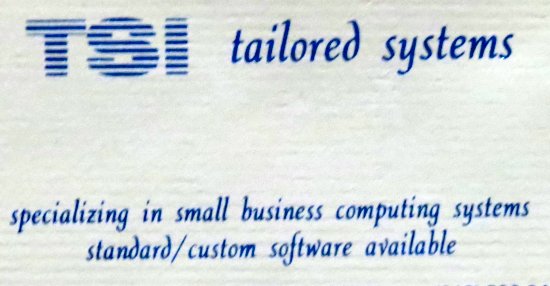
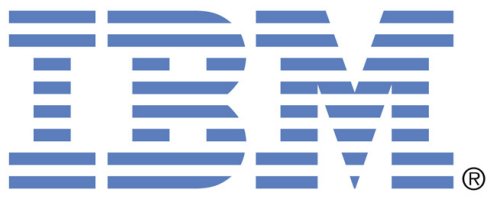

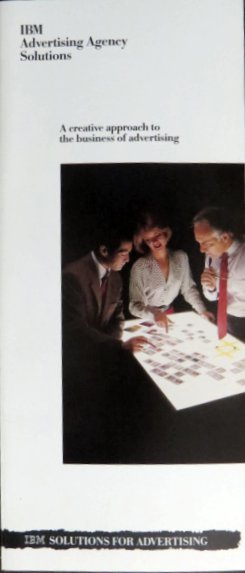
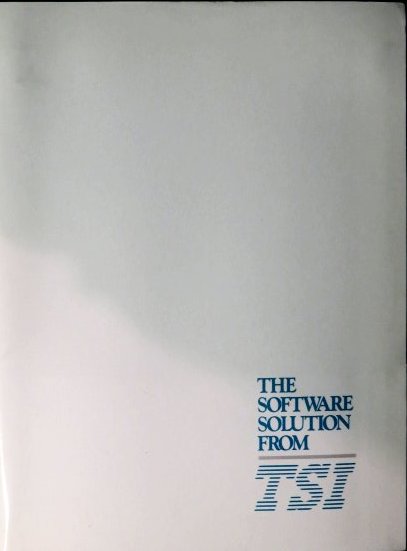
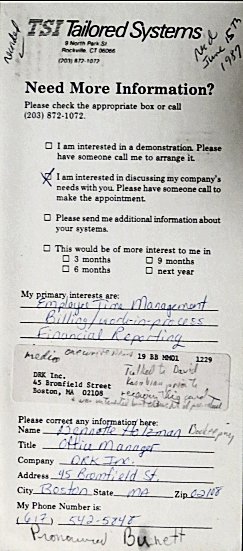

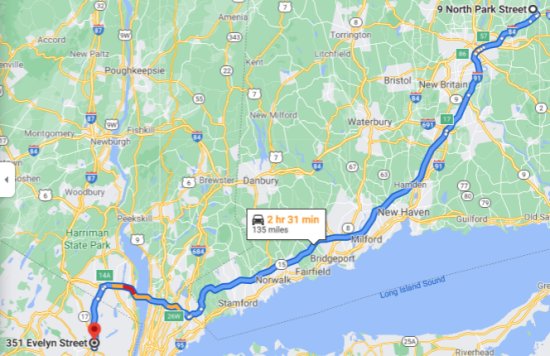




Pingback: 1985-1988 TSI: GrandAd: The System/36 Clients | Wavablog
Pingback: 1985-1988 TSI: GrandAd: The System/36 Clients | Wavablog
Pingback: 1986-2005 TSI: Marketing Employees | Wavablog